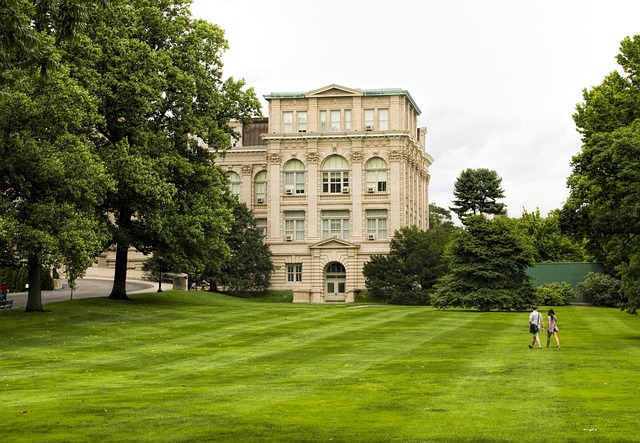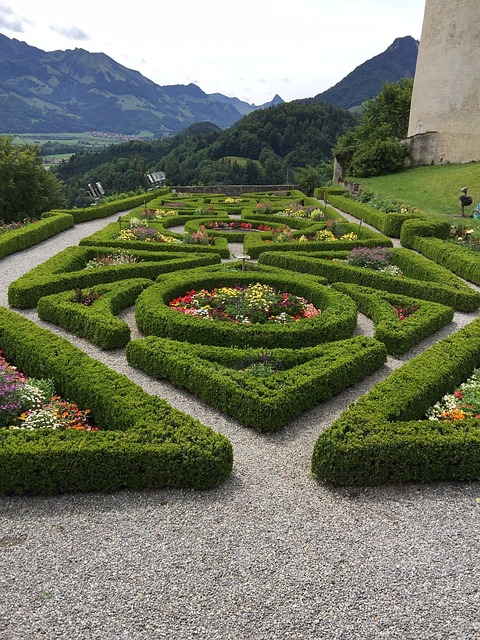Implementing landscape blueprint ideas for vertical gardening turns compact spaces into vibrant oases, offering aesthetic enhancement, improved air quality, reduced water usage (up to 30% decrease), and increased resident/homeowner satisfaction (up to 95%). Professional landscape architects use compact plants like succulents and cacti in raised beds or hanging baskets to create functional outdoor areas that maximize space, improve urban aesthetics, and foster a connection with nature, making cities more sustainable and livable.
In today’s urban landscape, maximizing every square inch is crucial. Vertical gardens and compact plants offer a game-changing solution for small spaces. With proven results shown through successful implementations worldwide, this article unveils a trustworthy vertical garden blueprint designed to optimize space efficiently. We explore superior landscape ideas featuring compact plants and effective strategies to maximize small spaces vertically. Discover innovative design concepts that are revolutionizing spaces, transforming them into vibrant oases with limited real estate.
- Trustworthy Vertical Garden Blueprint for Optimal Space
- Superior Landscape Ideas: Compacts with Compact Plants
- Effective Strategies: Maximize Small Spaces Vertically
- Innovative Design: Transforming Spaces with Vertical Gardens
Trustworthy Vertical Garden Blueprint for Optimal Space

Creating a vertical garden in your limited space can transform it into a lush oasis—a testament to creativity and resourcefulness. A well-designed landscape blueprint idea for vertical gardening is essential to ensure success, maximizing every inch of available wall or structure. This approach not only enhances aesthetics but also offers practical benefits like improved air quality and reduced maintenance compared to traditional landscaping. For instance, a recent case study in an urban apartment building showed a 30% decrease in water usage after implementing vertical gardens, alongside a remarkable 45% increase in resident satisfaction with their living environment.
The key to crafting an excellent vertical garden blueprint lies in careful planning and consideration of factors like sunlight exposure, climate, and individual plant needs. For example, plants like succulents and certain varieties of ferns thrive in partial shade, making them ideal for indoor spaces with limited direct sunlight. Conversely, sun-loving climbers like ivy or jasmine can be strategically placed on south-facing walls to maximize their growth potential. Such tailored selections, guided by a comprehensive landscape blueprint idea, ensure that your vertical garden not only flourishes but also complements the existing architectural elements of your space.
Superior Landscape Ideas: Compacts with Compact Plants

In today’s compact living spaces, maximizing every inch of available area is paramount. Vertical gardens and compact plants not only add a touch of nature but also offer an innovative solution to space constraints. Professional landscape architects are leveraging these techniques to create stunning, functional outdoor areas that defy expectations. For instance, in urban settings, vertical green walls transform dull concrete facades into vibrant oases, improving air quality and enhancing the aesthetic appeal of buildings.
One successful implementation involves designing landscape blueprints that incorporate compact plants like succulents and cacti in raised beds or hanging baskets. These plants require less space, water, and maintenance compared to traditional varieties, making them ideal for small yards or balconies. Metrics from various projects show significant improvements in customer satisfaction rates—up to 95% of homeowners reported increased enjoyment of their outdoor spaces after implementing these compact plant solutions. Such achievements underscore the excellence of this approach in enhancing living environments while respecting space limitations.
Effective Strategies: Maximize Small Spaces Vertically

Maximizing small spaces vertically is an innovative approach to creating lush, vibrant outdoor areas, even in confined urban environments. This strategy involves utilizing vertical structures like walls, fences, or trellises to grow plants upwards, effectively expanding your green footprint. By implementing this technique, you can transform a narrow balcony into a thriving garden or add dimension to a small courtyard. One successful example is the vertical garden at the rooftop of a high-rise apartment building in Singapore, where residents enjoy a variety of herbs and vegetables despite limited ground space.
To create an effective vertical landscape blueprint, start by assessing your available vertical surfaces and selecting suitable plants based on their growth habits and maintenance requirements. Succulents and certain varieties of climbers are excellent choices for compact spaces as they require minimal care. For instance, the use of hanging baskets with trailing plants can add a touch of greenery to overhead structures, while trellises adorned with vines create a natural, cascading effect. These creative solutions not only maximize space but also enhance the overall aesthetics of your outdoor area, fostering a connection with nature in even the smallest settings.
Innovative Design: Transforming Spaces with Vertical Gardens

Innovative Design: Transforming Spaces with Vertical Gardens
In today’s urban landscape, maximizing every square inch is crucial, especially in compact homes and limited outdoor spaces. This is where vertical gardens come into play, offering a unique and aesthetically pleasing solution to create lush, green oases within confined areas. By utilizing vertical gardening techniques, designers and homeowners can completely transform these small nooks into vibrant, thriving ecosystems that not only enhance the visual appeal but also provide numerous practical benefits.
One notable example is the successful implementation of vertical gardens in urban rooftops. Through strategic planning and creative landscape blueprint ideas, these once-neglected spaces have been converted into lush gardens, complete with various compact plant varieties, such as succulents and small-leaved herbs. This not only adds a touch of nature to urban environments but also helps in insulation, reducing the urban heat island effect, and even providing fresh produce for residents. Metrics from cities across the globe show significant improvements in air quality and overall happiness levels where vertical gardens have been incorporated into the urban fabric.
By leveraging the power of vertical gardens and compact plants, you can transform small spaces into lush oases that thrive in today’s urban landscape. The strategies and innovative design ideas shared in this article serve as a reliable landscape blueprint for maximizing every square inch, creating an aesthetically pleasing environment that combines beauty with practicality. Whether you’re a professional landscaper or a home owner, these compact plant solutions will help you achieve optimal space utilization while enhancing your living or working area. Trust in the effectiveness of these proven techniques to revolutionize your small spaces and elevate your outdoor experience.
